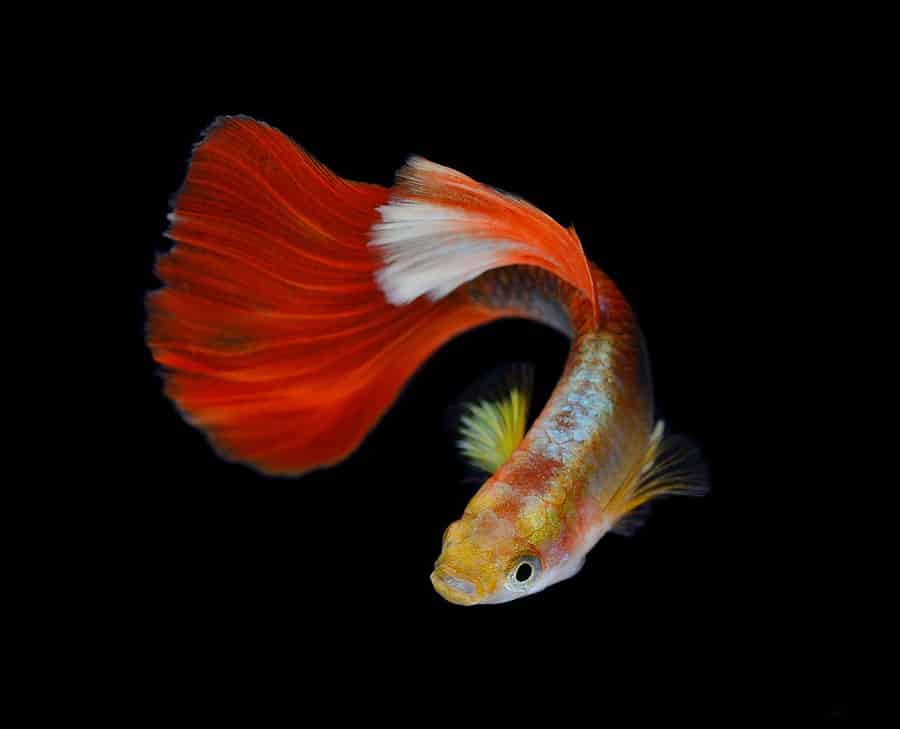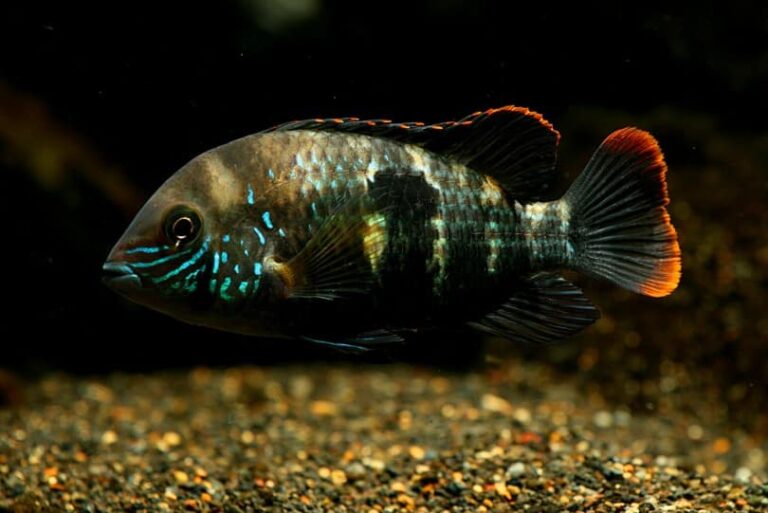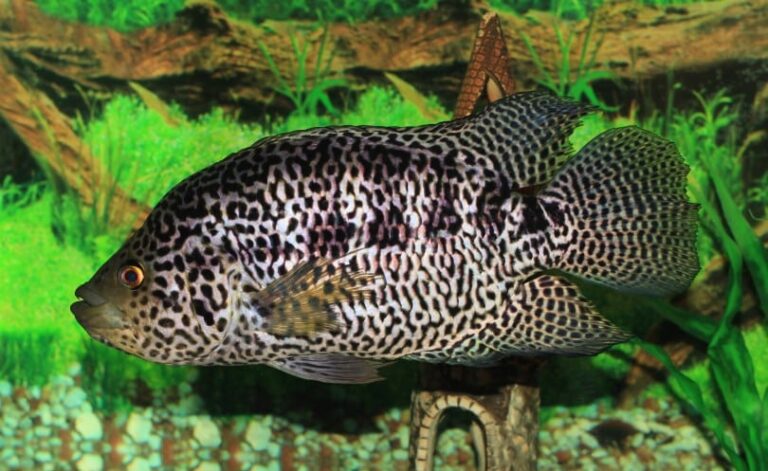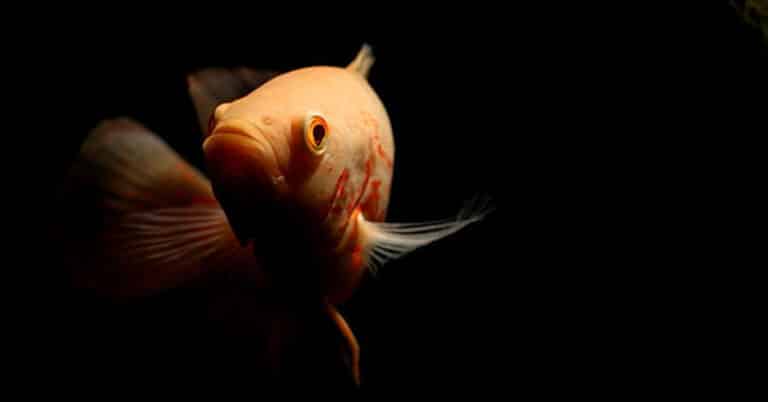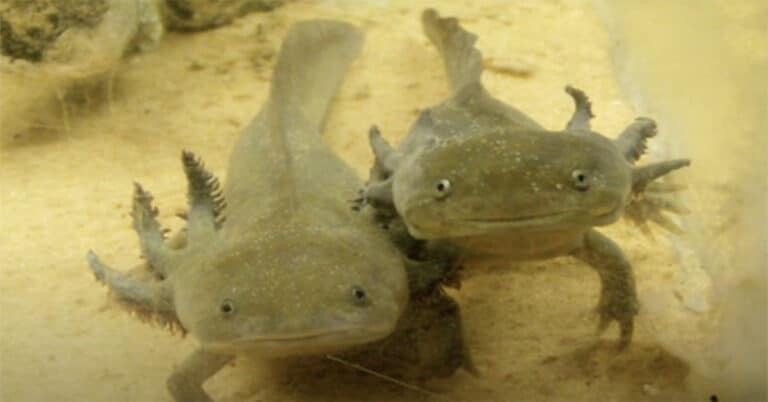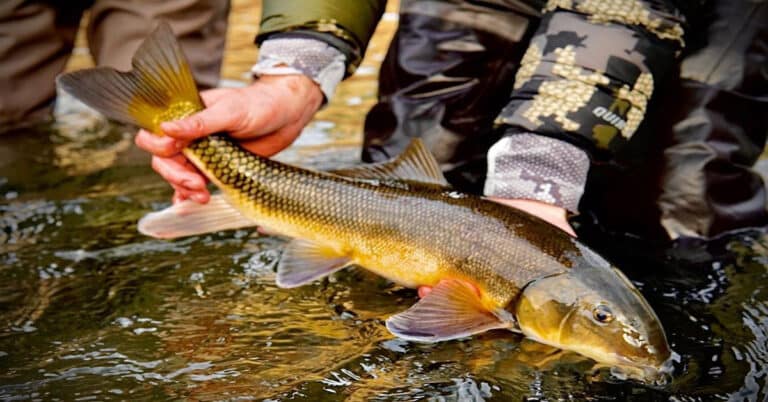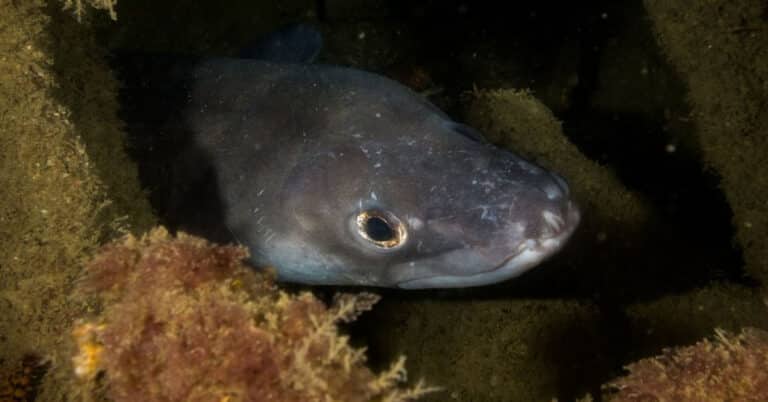Guppy Fish
Scientific Classification
| Kingdom: | Animalia |
| Phylum: | Chordata |
| Class: | Actinopterygii |
| Order: | Cyprinodontiformes |
| Family: | Poeciliidae |
| Genus: | Poecilia |
| Species: | P. Reticulata |
The Guppy, whose scientific name is Poecilia Reticulata, is otherwise called rainbow fish and also Million Fish. This fish is spread extensively all over the world and is one of the main well-known varieties of fish in the freshwater aquarium. It is associated with the Poeciliidae Group and is similar to the other individuals of the group that are live-bearers. The guppies are found in nature along the northeastern provinces of the continent of South America. The guppies were brought into various habitations and at present, you can see them the world over. These guppies adapt themselves very well in varied surroundings as well as biological situations. The male guppies are small compared to the females; the dorsal and caudal fins of the males are decorative, whereas the females have a dull color. The guppies that are found in the wild have a diversity of food resources which include Benthic algae and the larvae of insects found in the water. Guppies are made used as representations of life forms in the studies of evolution, ecology, and behavior.
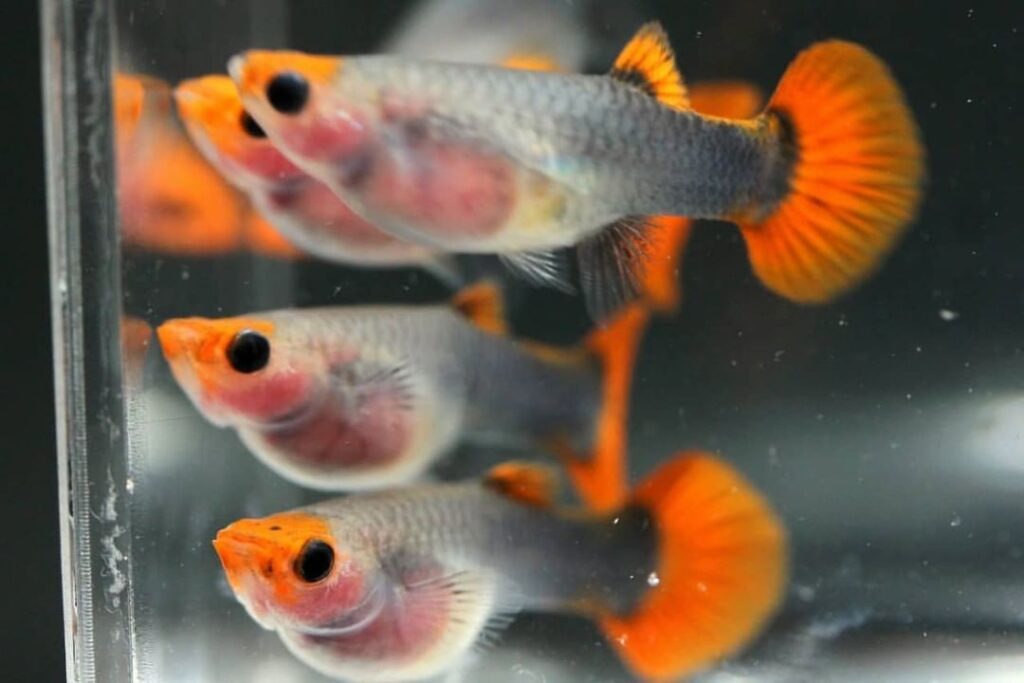
Distribution and Habitat
Guppies are indigenous to Barbados, Brazil, Antigua and Barbuda, the Netherlands Antilles, Tobago, and Trinidad, Venezuela and in the U.S. the Virgin Islands, but, with the exception of the continent of Antarctica. Guppies are launched in many regions on all the continents. At times they are found by a fluke, however, they are at most of the times used as an agent for controlling malaria; the guppies are supposed to consume the larvae of the mosquitoes in order to avert the spreading of the disease of malaria. However, in many instances they have an adverse effect on the number of the indigenous fish. Studies on them in nature disclose that the guppies have settled down in around all the bodies of fresh water where it is reachable to them. Their natural habitat extends, mainly in the rivulets that are adjacent to the borders of the coasts of the continent of South America. Even though the guppies are not particularly seen there, they tolerate salt waters and have settled down in a little of the salt water habitats. These guppies are probably found in abundance in the small rivulets and ponds rather than the quick-flowing rivers that are big and deep.
Description
The guppies display their sexual dimorphism. In case of the females the color of their body is gray, whereas the body of the male guppies comprises of stripes, spots or splashes with a wide range of colors. The dimensions of the guppies’ size differ; the females are 3 to 6 cm (1.2 to 2.4 inches) long, while the males are particularly 1.5 to 3.5 cm (0.6 to 1.4 inches) in length.
By careful breeding, breeders have created numerous strains of guppies; they are categorized by the variety of shapes, patterns, colors and size of their fins, like the grass and the snakeskin kinds. The majority of the ones brought up in homes possess distinctive morphological features compared to the earlier ones found in the wild. Both the males and females nurtured in homes, have generally bigger bodies and are very much generously decorated compared to their wild counterparts.
The number of chromosomes in the guppies is 23, inclusive of a couple of sex chromosomes, similar to the number in the human beings. The decorative genes that are present in the male guppies are inherited and are linked to the Y-chromosome.
Breeding
Guppies are called Livebearers; this indicates that the females litter every month, the newborns are formed completely and represent their parents in a tiny form. If a female guppy becomes pregnant then she is pregnant forever. Even in the absence of a male, female guppies become pregnant by preserving sperms that were left in a single earlier mating, for future litters for the sake of bringing forth other babies in batches. This attribute is called super-foetation. It is possible for the “millions fish” (an aged old name for guppies) to deliver several offspring within a short span of time. Just imagine, a female guppy becomes pregnant when they are 2 to 3 months of age, and in a period of 2 to 3 months time they start to reproduce prolifically,. You can well calculate the number of little ones they create in a small quantum of time.
Red Fire Guppy
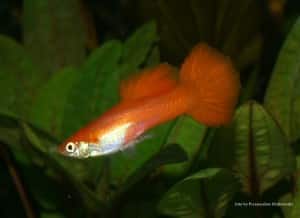
The color of The Red Fire Guppy is an eye-catching deep red color. This flaming red guppy is one among those chosen for its color by the amateur starters and breeders..
QUICK STATISTICS:
- Minimum size of the tank:- 20 gallons
- Level of Care :- Easy to take care
- Behavior :- Peace loving
- Conditions of water :- pH 5.5. to 8.0, KH 10 to 30, 64 to 820F
- Maturity size :- 2 inches
- Color :- Red, Yellow, Black, White
- Type of diet :- Omnivorous
- Origination :- Bred in farms, Singapore
- Group :- Poeciliidae
Green Cobra Guppy
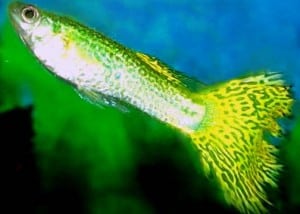
The Green Cobra Guppy is otherwise named the Millions Fish and at times just Guppy. It is one among the different colors of the guppy (Poecilia Rreticulata)
QUICK STATISTICS:
- Minimum size of the tank:- 20 gallons
- Level of Care :- Easy to take care
- Behavior :- Peace loving
- Conditions of water :- pH 5.5. to 8.0, KH 10 to 30, 64 to 820F
- Maturity size :- 2 inches
- Color :- Green, Yellow, Black, White
- Type of diet :- Omnivores
- Compatibility :- Refer chart
- Origination :- Bred in farms, Singapore
- Group :- Poeciliidae
Orange Sunshine Guppy
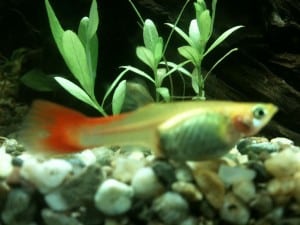
The Orange Sunshine Guppy is one among the different colors of guppy(Poecilia reticulata ).
Statistics
- Minimum size of the tank:- 20 gallons
- Level of Care :- Easy to take care
- Behavior :- Peace loving
- Conditions of water :- pH 5.5. to 8.0, KH 10 to 30, 64 to 820F
- Maturity size :- 2 inches
- Color :- Blue, Orange
- Type of diet :- Omnivorous
- Originally from :- Bred in farms, Singapore
- Group :- Poeciliidae
Lemon Cobra Guppy
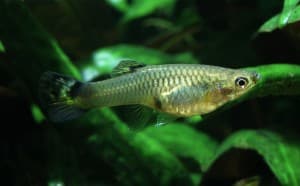
The Lemon-Cobra Guppy also goes by the name of Millions Fish and at times just called by the name, Guppy. It belongs to one among the color differences of the Guppy (Poecilia reticulata)
- Minimum size of the tank:- 20 gallons
- Level of Care :- Easy to take care
- Behavior :- Peace loving
- Conditions of water :- pH 5.5. to 8.0, KH 10 to 30, 64 to 820F
- Maturity size :- 2 ½ inches
- Color pattern :- Green, Yellow, Blue, Green
- Type of diet :- Omnivorous
- Compatible :- Refer chart
- Originally from :- Bred in Asia, Brazil to Central America
- Group :- Poeciliidae
Some of the other colorful and fancy Guppies are :
- Gold Cobra Fancy Guppy
- Albino King Cobra Guppy
- Blond Tux Half-Black Guppy
- Fancy Red Tux Half-Black Guppies
- Metal Red lace king cobra guppy
How to Grow at Home
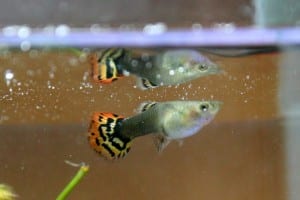
Temperature
Temperature has a profound effect on the growth of your guppy babies. The growth of the babies, if retained in a warm enclosure around 800 F is rapid, compared to those in an enclosure where the temperature is around 700F. The reason for this is on account of the warmth given to it that enhances the metabolism of the guppies; the whole process becomes rapid even in their maturity. In case you allow the guppies to remain in the warm water of temperature 800F when they are fully grown, their metabolic activity will continue to increase.
Food
Providing them a fine diet enhances the development of the guppies faster than usual. Guppies are omnivorous fish; therefore they require vegetable and animal diet. Supply them with food in intervals of 4 to 8 times a day; when they are fully grown reduce their feed to1 to 2 times a day. The best food for your guppies is baby brine shrimp which hatches easily at home. The other type of fine food is spinach, bloodworm, algae and micro worms. When the guppies are babies, crush the flakes available in the market for them, and carry on feeding them with this food as a routine diet to ensure that your guppies are provided with the right type of food as per their requirement.
Water
The speed at which your guppies grow depends much on the quality of your water. The waste of the fish generates nitrates and when these nitrates accumulate, the growth of your guppies retard. In order that your guppies grow continuously, replace one third of the water every week. This eliminates the nitrates, and at the same time, improves the growth of your guppies. In case you are motivated, then change the water around one tenth daily, certain breeders do so, however, your guppies will perform well when you replace the water every week.
Tank
Normally guppies are peace lovers, and adjust well to almost all types of fish in your tank. In case you decide to house guppies not for breeding, then an aquarium of 10 gallon (37 Litre) is sufficient enough for pleasing some male guppies. Limit the number of your male guppies to 3 to 4 to avert fights between them.

Having discovered a fondness for insects while pursuing her degree in Biology, Randi Jones was quite bugged to know that people usually dismissed these little creatures as “creepy-crawlies”.

